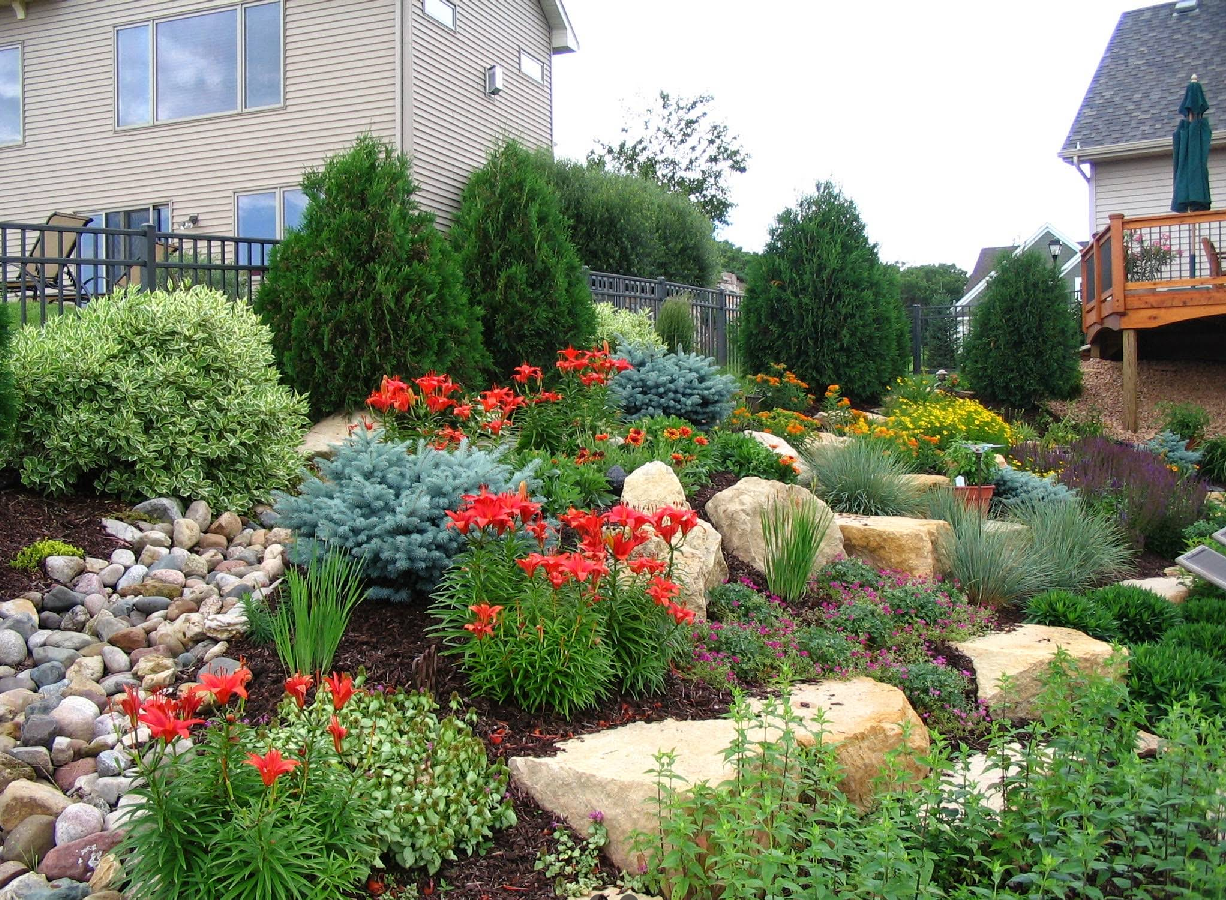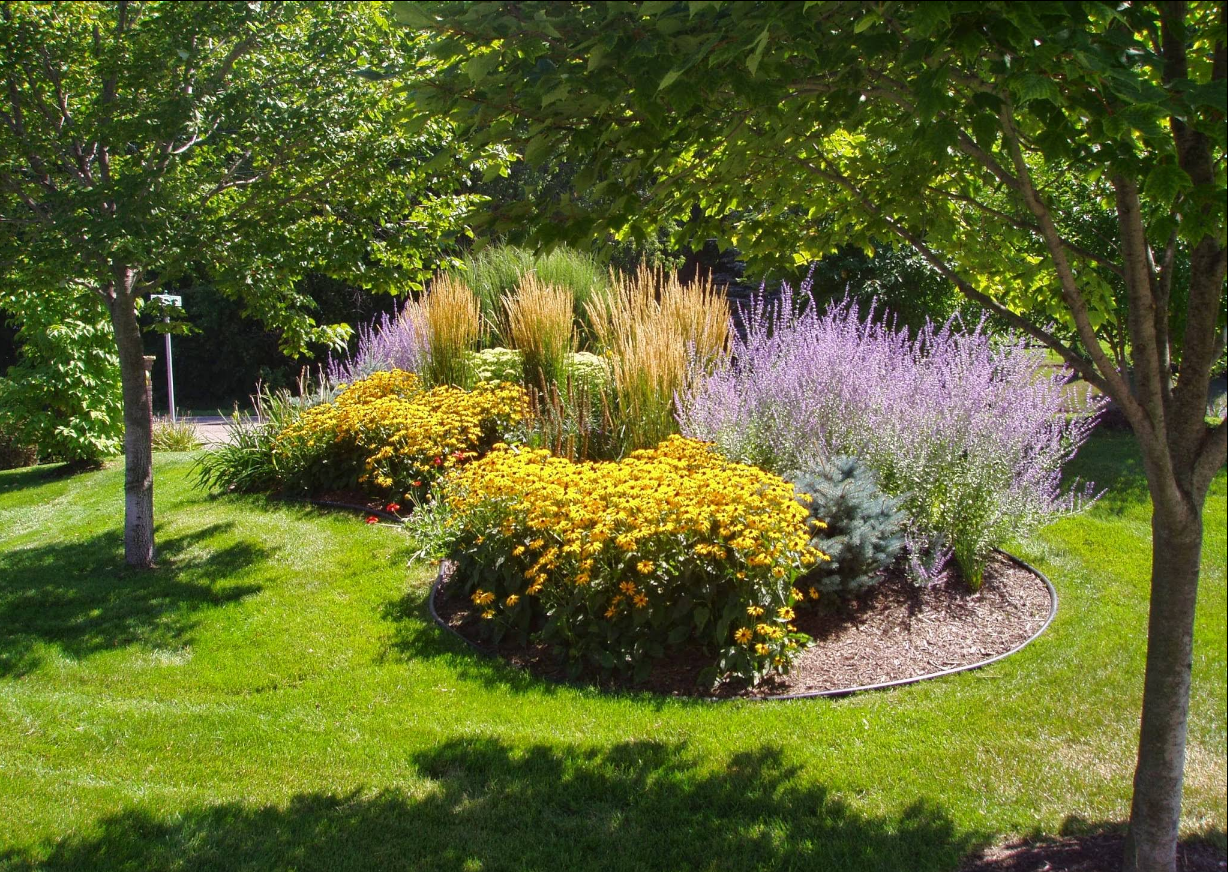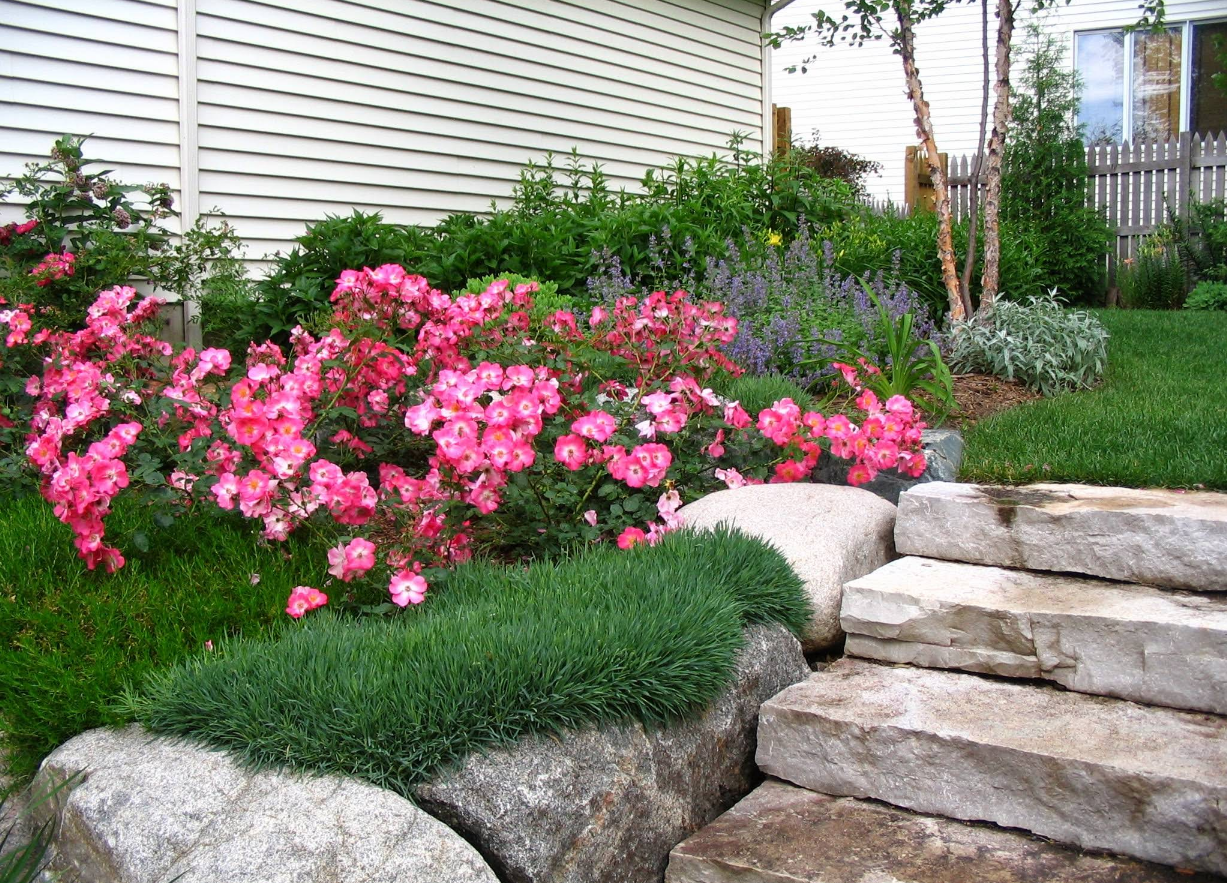Perennial Maintenance Northfield MN
Keep Your Garden Thriving Year After Year
The Key to Long-Lasting Garden Beauty
Perennials are the backbone of most residential landscapes — offering structure, color, texture, and movement that evolve through the seasons. But while they return each year, they still need proper care to remain healthy and vibrant.
At Landscape Gal, we don’t just design beautiful perennial beds — we help homeowners across Northfield and Rice County understand how to care for them over time. With the right maintenance, your perennials will not only survive but thrive for many seasons to come.
This page outlines the most important steps in maintaining your perennials throughout the year.
Why Perennial Maintenance Is Essential
Many people assume that because perennials “come back,” they don’t require upkeep. In reality, consistent care is necessary to prevent overcrowding, disease, and poor performance
Benefits of regular perennial care include:
- Longer blooming periods and more vigorous growth
- Reduced disease and pest issues
- Better airflow and space between plants
- Improved soil health and moisture control
- A tidier, more attractive garden bed
By investing a little time each season, you can protect the structure and beauty of your garden.
Seasonal Perennial Maintenance Schedule
Each season brings specific tasks to support perennial health and appearance.
Spring Tasks (March – May)
- Remove winter mulch and debris as temperatures rise
- Cut back dead plant material not removed in the fall
- Divide crowded perennials like hosta, daylily, and black-eyed Susan
- Apply compost or light mulch to enrich soil and suppress weeds
- Fertilize lightly with a balanced, slow-release formula
- Stake taller varieties before they flop — don’t wait until they need it
Summer Tasks (June – August)
- Deadhead spent flowers regularly to encourage rebloom
- Monitor for pests and disease such as powdery mildew or aphids
- Water deeply but infrequently during hot, dry spells
- Cut back overgrown foliage on mid-season plants to rejuvenate form
- Weed regularly to prevent competition for moisture and nutrients
Fall Tasks (September – November)
- Cut back perennials after a hard frost — or leave for winter interest
- Apply mulch to protect root zones from freeze-thaw damage
- Remove diseased or insect-infested material and dispose (don’t compost)
- Label plant groupings for easier spring identification if needed
- Divide fall-blooming perennials like asters if necessary
- Plant new perennials early in fall to establish before winter
Winter Tasks (December – February)
- Brush off heavy snow from ornamental grasses if collapsing
- Avoid walking on frozen beds to prevent soil compaction
- Plan your edits for the next growing season
- Assess plant performance and note what needs replacing or moving
Dividing and Transplanting Perennials
Division is one of the best things you can do for long-term perennial performance. It prevents overcrowding, improves flowering, and helps you multiply your favorite plants for free.
Signs It’s Time to Divide
- Center of the plant is bare or hollow
- Reduced blooms or smaller flowers
- Plants are encroaching on neighbors
- Foliage looks weak or spindly despite watering and fertilizing
Best Times to Divide
- Early spring for summer/fall bloomers
- Early fall for spring bloomers
- Always divide on a cool, overcast day if possible
- Water well before and after transplanting
Caring for Soil and Watering
Perennials need a strong root system and healthy soil to flourish.
- Mulch annually to conserve moisture, improve soil texture, and suppress weeds
- Water slowly and deeply, especially during dry spells — shallow watering leads to weak roots
- Avoid overwatering, particularly in clay soils that retain moisture
- Use compost as a topdressing to encourage microbial activity and plant health
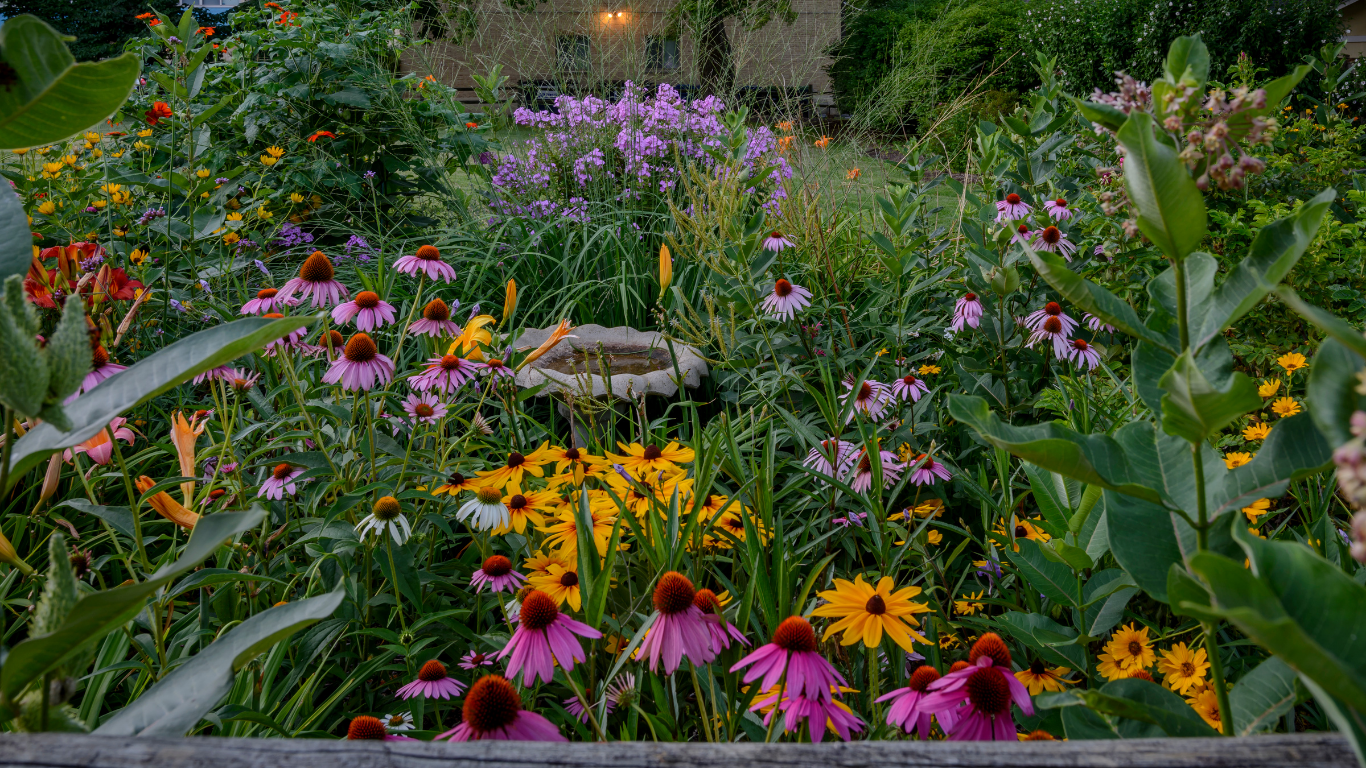
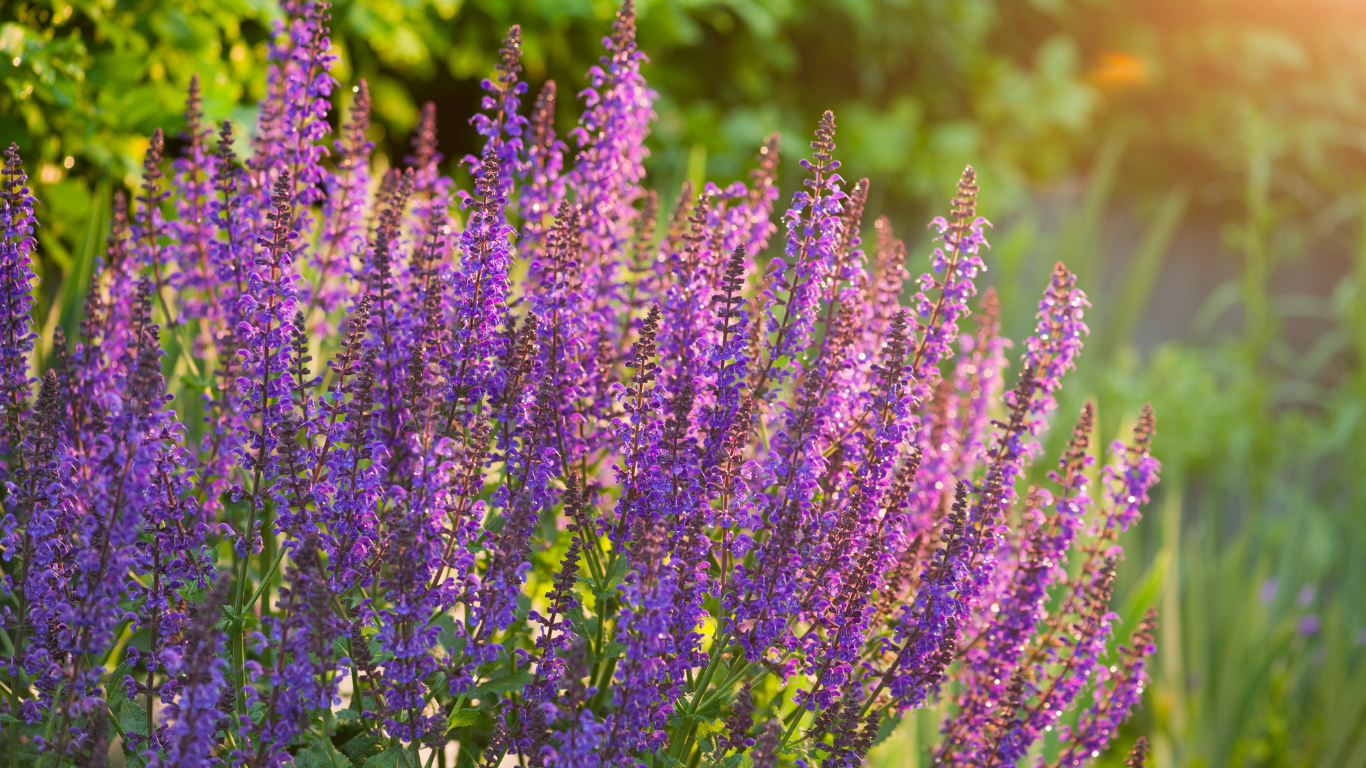
Managing Pests and Diseases
Most perennials are resilient, but poor spacing, wet foliage, and stress can lead to issues.
- Space plants properly to promote air circulation
- Remove infected leaves as soon as spotted
- Disinfect pruners between plants when dealing with disease
- Encourage beneficial insects
and avoid broad-spectrum pesticides
- Apply natural fungicides early if needed on prone varieties
FAQs – Seasonal Landscape Care
When is the best time to plant new perennials or shrubs?
The best times are early spring and early fall. These seasons provide cool temperatures and consistent moisture, helping roots establish before extreme weather.
How often should I mulch my garden beds?
Once or twice per year. Spring mulching improves moisture retention and weed control. Fall mulching insulates plant roots over winter.
What’s the best fertilizer schedule in Minnesota?
We recommend a light spring fertilizer, a summer maintenance feeding (if needed), and a winterizer in early fall. Avoid heavy feeding in mid-summer heat.
Do I need to clean my rain garden every season?
At minimum, clean it in spring and fall. Remove sediment, leaves, and dead growth to keep water flowing correctly.
Should I prune trees and shrubs in fall or spring?
It depends on the species. In general, prune spring-blooming shrubs after bloom, and structural prune trees in late winter when dormant.
Contact Landscape Gal
3343 Union Lake Trl, Northfield, MN 55057
Monday–Friday, 7:30am – 5:30pm
